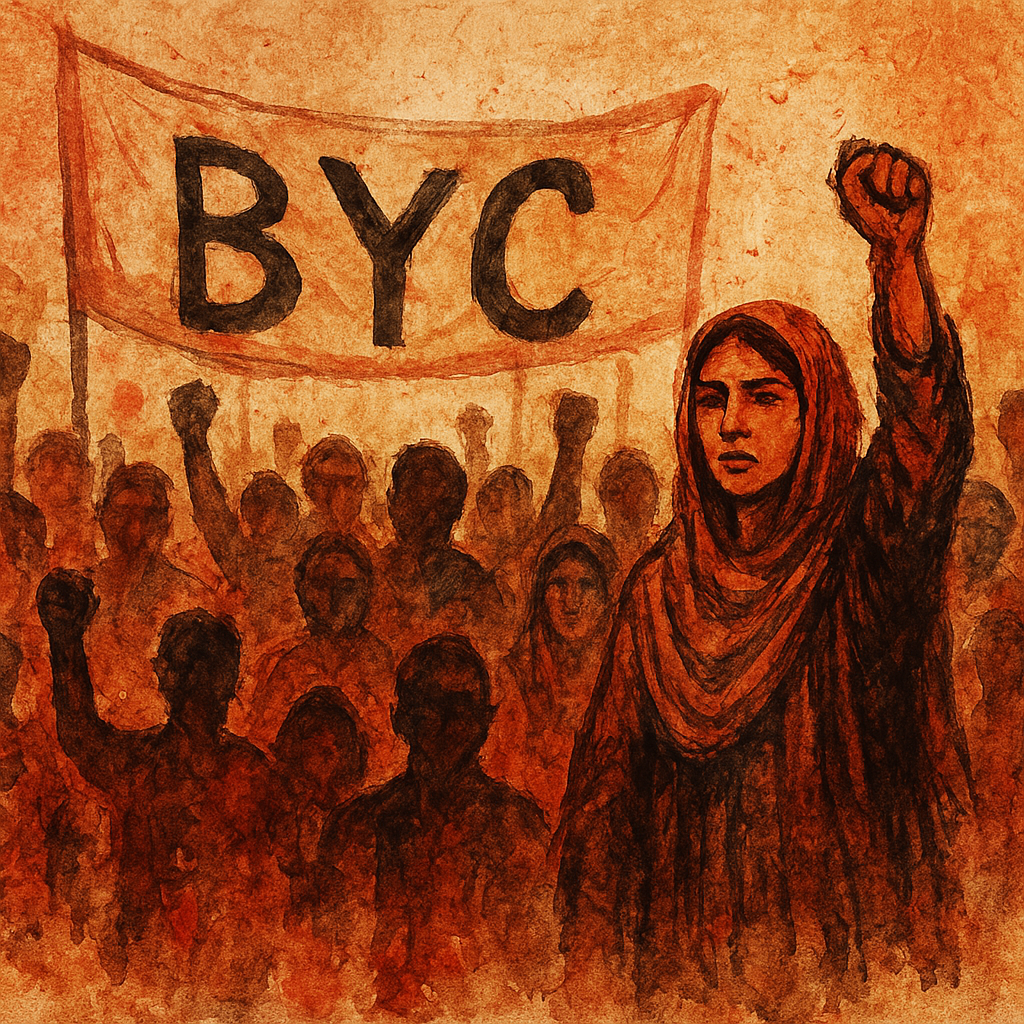By Sameer Hoth
BYC’s frequent association with diaspora members linked to banned political groups through joint appearances on talk shows, Twitter Spaces, and other public platforms has allowed the state to draw connections between a peaceful rights movement and separatist organisations. While these interactions may be rooted in shared concerns over human rights, they have nonetheless blurred the lines and given the state a reason to question BYC’s neutrality and intent.
The Baloch Yekjehti Committee (BYC), widely recognised for its peaceful advocacy, has become a powerful symbol of nonviolent resistance in Pakistan’s militancy-ridden Balochistan province. Its incarcerated leader, Dr Mahrang Baloch, has earned international praise, including a nomination for the Nobel Peace Prize, recognition by TIME magazine and the BBC’s 100 Women list. Despite this, the Pakistani state continues to accuse BYC of being a proxy for the banned Baloch Liberation Army (BLA), a militant group seeking separation from Pakistan through armed struggle.
These accusations are not new. For some time, state officials, including the army’s spokesperson and former caretaker prime minister Anwaar Ul Haq Kakar have labelled BYC as sympathetic to terrorists or acting on behalf of “hostile agencies.” A sustained media campaign has sought to discredit the group, despite the BYC’s consistent emphasis on peaceful methods. The pressing question remains: What has the BYC done to counter these allegations?
Critics argue that the organisation’s leadership has, at times, made statements or taken actions that inadvertently fuel the state’s narrative. They point to moments when the movement’s rhetoric has been driven more by emotion than strategy, perhaps understandable, given the deeply personal and traumatic nature of enforced disappearances and extrajudicial killings, but still problematic in the long-term.
A turning point came after the March 11 train attack. Dr Mahrang Baloch held a press conference in Quetta, demanding that the identities of over 20 dead bodies allegedly victims of extra-judicial killings be revealed to their families. While the press conference was rooted in legitimate concerns, it quickly became a flashpoint. The state capitalised on it to launch a crackdown, portraying the event as evidence of BYC’s alignment with militant interests.
Could this have been handled differently? Would it have been more strategic for a different figure such as veteran activist Mama Qadeer to hold that press conference? The decision to have Dr Mahrang lead that particular press engagement may, in hindsight, have intensified the backlash.
What followed raised further questions. Rather than de-escalating, BYC doubled down. Dr Sabiha, another senior BYC figure known for her harsh speeches, appeared in Mastung and delivered a fiery address that critics say gave further ammunition to the state to clamp down on BYC. Was this speech a necessary act of resistance or a miscalculation?
Adding to the controversy, Dr Sabiha reportedly went underground. This has raised eyebrows even among some sympathetic Baloch voices. Is it appropriate for a leader of a peaceful rights movement to go underground? While BYC says that someone must remain on the ground to keep public mobilisation alive under worsening conditions. Is this explanation sufficient and credible in the eyes of the wider public?
The government, for its part, has used these events to intensify its pressure campaign. Yet, despite the arrests of its top leadership, BYC retains massive public support. This offers the organisation a narrow but critical window for strategic recalibration.
At this stage, the key question is not whether the BYC remains a peaceful movement, it clearly does, but whether it can maintain that identity under increasing pressure, without falling into patterns that have previously led to the evaporation of other Baloch movements such as Baloch Students Organisation (BSO Azad) and the Baloch National Movement.
It is not too late for course correction. But the stakes are higher than ever. BYC must now decide whether it will continue as a disciplined rights movement, carefully separating emotion from strategy or risk giving the state the very justification it seeks to dismantle it altogether.
(The author is a graduate in Violence, Conflict and Development from SOAS University of London, with a research focus on Iran and its ethnic tensions, particularly concerning the Baloch community across the goldsmith line. He hails from Sistan-Baluchestan.)
